If you have coarse grass ruining the appearance of your lawn then chances are that it’s Annual Meadow Grass, or AMG, or Poa Annua.
The bad news is that this weed grass can spread quickly. What makes it even worse is that it can be difficult to control, especially if it’s been allowed to establish.
But with a bit of perseverance, you can get on top of it and keep it away. However, depending on the severity of the infestation, you might have to prepare yourself for a battle!
What is Annual Meadow Grass?
Annual meadow grass is one of the most common grasses in the world.
You’ll find it growing at the most southern tip of South America and all the way through the Northern Hemisphere. From coastal areas to the tops of mountains.
It grows in the cracks of pavements, in roof gutters and is even a problem new turf.
It’s prolific!
The name ‘Annual Meadow Grass’ suggests that it’s an annual weed but there are perennial types that will stick around year after year.
That said, it doesn’t have perennial underground roots. So, if you completely remove it, it can’t re-grow.
The problem is, removing it completely can prove very difficult.
What Does it Look Like?
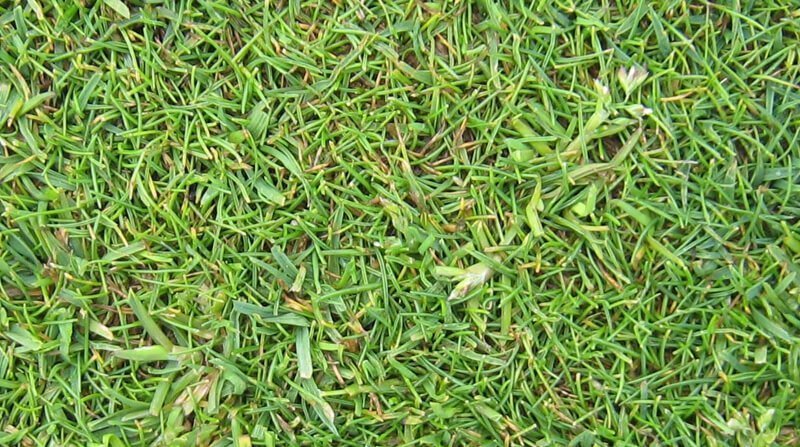
Identifying AMG is easy.
It’s a coarse grass with fairly wide leaves, often a lighter green than the rest of the grass in your lawn, particularly in adverse conditions. For example, if the soil is infertile.
It grows from a central base from which you can trace all of the shoots and runners.
How it Grows and Spreads (Rapidly)
This is a very adaptable weed grass that grows and spreads rapidly.
Although it grows and flowers all years round, it’s most prolific during the Spring. You’ll often see a flush of growth in Autumn too.
Plants are capable of reproduction from the age of just a month and produce viable seeds approximately every 10 days.
What’s worse is the fact that it grows very low so it can produce seeds as low as 5mm to the ground. It can escape even the shortest of mowing heights.
Because Poa Annua produces seeds so often and grows so close to the ground, it can spread incredibly quickly.
Annual Meadow Grass In Newly Laid Turf
I have had lots of emails from people complaining about the presence of Annual Meadow Grass in their newly laid lawns. The frustrated, often furious writers of those emails often blame the turf supplier for providing a poor product.
As such, it’s important to understand the turf growers’ position.
Firstly, when you buy new turf, ensure you buy it from a reputable supplier who does their best to control and prevent the growth of AMG in their production fields.
Until fairly recently, turf growers were able to use a chemical to kill it. However, this has now been made illegal and the only way to control it is via cultural methods, which, are less reliable.
Companies like Rolawn use nothing but quality grass seed, constantly test the purity of their seed blends and sow that seed in patterns that outcompete weeds.
They even build their own lawn mowers to cope with their vigorous mowing regimes in order to combat the growth of weeds and weed grasses.
Still, because chemical control is no longer available, even turf growers can’t guarantee that their turf will be 100% free of Annual Meadow Grass. All they can do is deem that it’s within an acceptable limit.
How To Remove Annual Meadow Grass From Your Lawn
Depending on how much you have in your lawn, the process of removing Annual Meadow Grass will differ.
For Small Amounts
If you catch it early and the problem is limited to a small area, it’s often best to remove it using a sharp knife.
If you just find an isolated plant, cut through the crown of the plant with a sharp knife and pull out the roots.
Easy!
For small patches, cut into the roots firmly in opposite diagonal directions. The good news is that Annual Meadow Grass doesn’t have underground roots, so once they have been cut and removed, the plant will die.
Because the roots are generally on the surface instead of underground, you’ll be able to cut away much of the weed grasses roots while the deeper roots of the other grasses remain intact.
Be aware though, even with small patches, you might need to put up a fight!
If growing conditions are good, overseed any bare patches of lawn with your chosen grass seed mix.
The patches should recover fairly quickly.
For Larger Infestations
If your lawn is suffering from a larger infestation then it’s best to wait until Autumn, September is usually a good time. Then, scarify your lawn quite heavily to cause as much damage as possible to the Annual Meadow Grass and its roots.
After scarifying, rake the lawn with a powered lawn rake to tear out any remaining plants.
In the interest of being thorough, you might even choose to look over your lawn after raking to spot any plants that have escaped.
Scarifying and raking are pretty invasive treatments so in order for your lawn to recover as quickly as possible, overseed your lawn. Then fertilise your lawn with a good quality lawn feed to encourage quick germination and recovery.
Hopefully, by the time the next Spring rolls around, the problem should be at least 90% better.
The problem is that this is a very persistent weed grass.
You might still be faced with at least some the following Spring. So be ready for battle.
In the worst case, if you just can’t get on top of the problem it’s often more economical to just replace the turf.
How to Control and Minimise Annual Meadow Grass in Your Lawn
As I’ve said a couple of times now, removing, preventing or minimising Annual Meadow Grass can be a battle.
However, there are things you can do to improve the growing conditions for the other grasses while limiting the appearance of this weed grass.
Mow the Lawn Regularly, In Different Directions

Annual Meadow Grass Doesn’t tolerate regular mowing – especially if you mow in different directions. This is called ‘cross mowing’.
Cut the grass every couple of days during the growing season but each time you do, change the direction in which you mow.
So one day you’ll mow the lawn lengthways, the next time you’d mow widthways and the next you’d mow diagonally.
This will weaken the shallow rooting, weed grass while having no effect on the deeper rooting desirable grasses.
Important Tip
As we know, Annual Meadow Grass grows low to the ground so even if you mow on the lowest setting, the seed heads can often remain intact.
To make sure you remove the seed heads, either brush or rake the lawn before mowing to stand the grass up.
To be thorough, you could brush or rake the lawn, then mow. Brush or rake the lawn in another direction and then mow again.
Do this every couple of days.
Fertilise Your Lawn In Early Spring
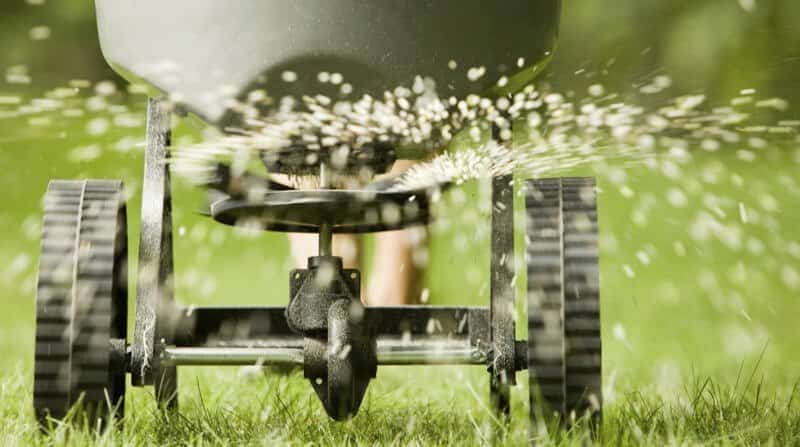
Fertilising your lawn in early Spring (end of March/beginning of April depending on the weather) will give the desired grasses the nutrients it needs to start growing.
Then, by the time Spring is in full swing, there should hopefully be a lot less room for Annual Meadow Grass to germinate and spread.
Control Worm Activity in Your Lawn
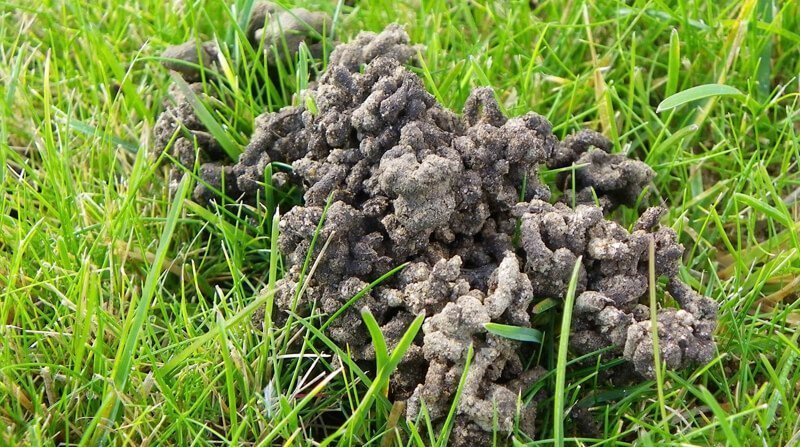
During the cooler and wetter seasons of Spring and Autumn (and particularly mild Winters), you might start to notice a lot of worm casts on your lawn.
Worm casts are incredibly fertile and provide the perfect place for weeds and weed grasses to germinate and grow.
Reduce worm activity by regularly removing fallen leaves from your lawn with a garden vacuum as often as you can.
It might also be worth applying a product called Cast Clear.
- Deters lawn worm casts for up to 20 days
- Proven control on lawns and sports turf
This is a product that contains nutrients that are proven to reduce worm activity on the surface. It doesn’t kill the worms, just prevents them from depositing their casts on the surface.
Apply a Regular Dose of Iron Sulphate to Increase Soil Acidity
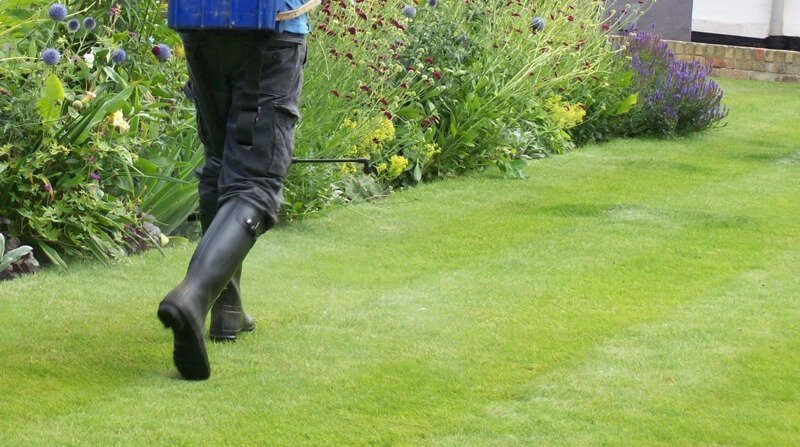
Annual Meadow Grass excels in neutral soils. It doesn’t do so well in acidic soils.
However, desirable grasses like bents and fescues actually prefer acidic soils. Anything you can do to raise the acidity of the soil is a good thing.
One way to do this is to apply a regular dose of Iron Sulphate.
Apply it every 6-8 weeks but make sure you apply it evenly so you don’t raise the acidity in some areas more than others.
In Summary
Annual Meadow Grass can be a real pain.
If you’ve spotted just one or two plants, you might be lucky and be able to cut through the roots with a knife and remove it before it grows, develops seeds and spreads.
However, if you have patches in your lawn, or a lot of your lawn consists of it you could struggle to really keep on top of it.
The key is to catch it early if possible and be regular and consistent in your treatment.
Over to You
Have you ever gone through the pain of battling Annual Meadow Grass in your lawn?
How did you beat it?
Or have you recently spotted it and wondering how to get rid of it?
Let me know in the comments below.
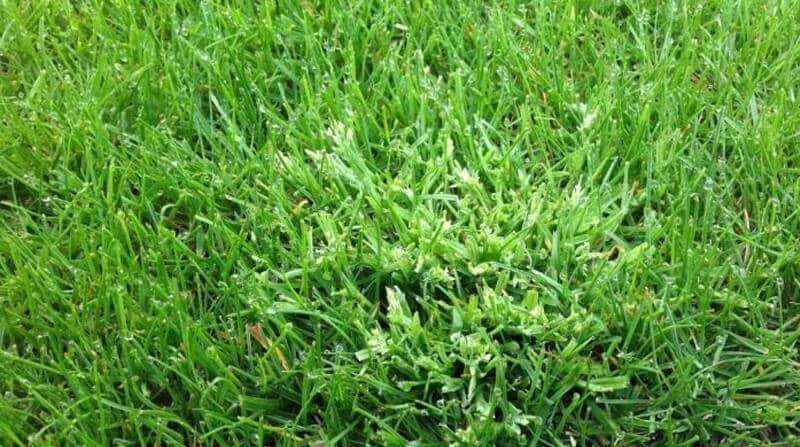


Hello Tim,
Well, your article above seems to sum up my newly laid Rolawn turf quiet well. The turf has been down for around 6-8 weeks and to say I am bitterly disappointed with the level of meadow grass that is present is an understatement. To try and dig it out would leave the turf looking a patchwork horror. I cut the grass with an Allett mower and was wondering if I could use their scarifier cartridge, (which they recommend using once a month during the growing season), to stand the grass up better and give me a better chance of removing it? I would have posted a picture of the grass, but there is no facility for uploading images.
Regards
Steve Murphy
We bought new turf for the London Turf Company only 10 weeks ago. We have done everything by the book watered it regularly in the dry spell, then cut it once a week and the Meadow Grass is everywhere in both lawns we had done at the front. I can’t cut it out S it is everywhere like it’s meant to be there. They are coming today to look at ideally we would like the turf replaced as it simply should not be this way £2000 of lawns looks like I bought weeds.
Had my lawn killed and a new lawn put in last fall with a reputable company. There is more meadow grass in my yard than regular grass. My yard has never looked this horrible and now I am at a loss as to how to get rid of it without killing the whole yard again. Why would anyone use grass seed that has meadow grass in it. If it’s not metal grass then it’s crabgrass. Personally I think crab grass would be easier to manage
Tim
I too have a lawn with loads of AMG ,we moved Just over 2 years ago when I retired always wanted a lovely lawn we had a guy who was recommended & took up our old lawn & laid a top quality lawn from a turf suppliers that I’ve known about for years ,
Looked great for about 6 months then the AGM started to appear loads of it I’ve never had a problem with a lawn like I have now ,I got my money back from the grower for the turf I think he knew it was a load of rubbish .
It’s become a bit of an obsession trying to stop the AGM by removing it by hand any help would be great ,the iron sulphate sounds good by raising the ph ,could you tell me the application rates please ?
Tim
I forgot to mention the other problems with my new lawn , it suffers from red thread & fusarium patches but on the good side no weeds as yet
Sid
We live within the South Downs in Sussex. We have only been here for around 3 years but no matter how often I remove the meadow grass patches in my lawn and also scarifying and over seed to produce a beautiful lawn by late spring – the seeds arrive naturally on the winds coming from the Downs. So by the following spring the lawns are again blighted and the cycle begins again!
My front lawn is small so I go through the hand removal and reseeding exercise on that lawn. But in the larger back garden I am reduced to just harsh scarifying and criss crossing the mowing pattern each week in order to at least give the good lawn a better chance of emerging. It would be brilliant if the DNA of meadow grass could be isolated and a solution engineered to stop it developing. Bliss! I would happily pay well for such a product!!